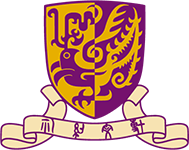Cantonese is normally regarded as a language that has an unusually rich repertoire of postverbal elements, many of which cannot be found in Mandarin. The question arises as to the syntactic representation of these functional categories and their preverbal counterparts in clausal structure. This project focuses on the syntax of functional categories in Cantonese, concentrating on the discontinuous constructions of functional categories and their dialectal variation under a parametric framework. In this proposed project, I will investigate systematically how a postverbal element in the discontinuous construction interacts with its preverbal counterpart. The descriptive results can be used as a database for future research in Chinese grammar and Chinese dialectology. To account for the empirical findings observed, this project will formulate a syntactic theory of the discontinuous constructions in Cantonese, and identify parameters from which the dialectal variation emerges. The theoretical part of the project will provide a theory of the discontinuous constructions in Cantonese that is grounded on comparative dialectal consideration. The vision behind this proposal is that the differences between Cantonese and Mandarin with respect to the discontinuous constructions can be all traced back to some 'micro-parameters' that will have predictable consequences in a number of constructions in these two dialects. This is a task that has not been taken before. The results are expected to help in fine-tuning the grammatical knowledge of the discontinuous constructions and to enable us to open up a new horizon in the study of functional categories in Chinese at large, resolving some longstanding disputes and controversies surrounding their syntactic nature in Chinese. It is also hoped that the project could provide a perspective from Chinese dialectal grammar on the understanding of the peripheral positions of a sentence in human language, shedding light on the studies of language acquisition and facilitating language learning of Cantonese and Mandarin/standard Chinese.
王念孫(1744-1832)是清代傑出的校勘學家、訓詁學家,他對先秦、秦漢古籍的研究成果,至今仍普遍為學者肯定與採用。目前研究王氏之學的論著雖多,研究範圍卻長期局限在《廣雅疏證》、《讀書雜志》等幾部已經刊刻的著作上,難有突破。本計劃將收集、整理、研究八種經王氏親手批校的古籍校本,包括經部小學類的《方言》、《廣雅》,子部的《管子》、《韓非子》、《晏子春秋》、《呂氏春秋》、《山海經》、《風俗通義》。這些校本收藏在中、臺圖書館的善本書庫,大部分從未對外公布,有待開發研究。本計劃擬將上述校本的材料輯錄,編成《王念孫古籍校本所見校改、校語彙編》(以下簡稱《彙編》),並上載至本計劃的網頁,為學者提供極具學術價值的新材料,解決目前有關王氏之學在研究材料上的局限,開拓研究王氏之學的新里程。
校本直接反映了王氏早年校讀古籍的最初形態,本計劃將具體分析八種校本的校改與校語,並將其與王氏晚年寫成的《廣雅疏證》、《讀書雜志》等著作比對,梳理王氏前後期校讀古籍的成績,全面歸納王氏校讀古籍的條例,藉此探究王氏的校勘、訓詁理論在早期形成的過程與進境。
本計畫旨在探討清代古典戲曲中明史書寫的創作背景、藝術、思想特色,以及社會、政治意涵。
The Qing dynasty (1644-1911) saw a tremendous burst of intellectual energy and creativity that led to a marked growth in historical drama as well as historiography. Among more than 3000 recorded plays composed in the Qing, approximately one third are history plays, and over 200 deal with Ming (1368-1644) history, which include great works of art. Under what circumstances were the events and figures of the preceding dynasty or their literary representations recalled and reshaped? To what extent was historical drama created during the Qing different from that of previous dynasties? Is it true that re-enacting events of the past helps a group “commemorate collectively” and the shared experience creates “a feeling of identity, binding the participants together and excluding outsiders”? (Grant and Ravelhofer 2008, 5) What factors came into play in the dramatic representations of Ming history in Qing China? To what extent were the writing and use of Ming history in drama different from the official history, and also different from early Qing to mid-Qing and to late Qing? What impact did these history plays have on people’s perception of the Ming and its relation to their present time? By examining the entire corpus of the 170 or so extant play-texts within their social, cultural, and historical contexts, I wish to portray the diversity and inter-textuality of the Qing world of historical drama, in order to shed new light on the creative processes, aesthetic and philosophical characteristics, as well as the socio-political relevance of classical drama in late imperial China.
Besides furthering drama research, another aim of my proposed investigation is to broaden the scope of traditional historical study by exploring the "emotional" history of the Qing people, for in drama, social energy, collective beliefs and experiences are often encoded. The fact that quite a number of excerpts from Qing historical plays still grace the Kun opera stage bears witness to their artistic value and emotional appeal. Last but not least, when the project is completed, contemporary playwrights may gain insights from my theoretical reflections on the evocative force and emotional structure of the best kind of drama ever written on human history.

